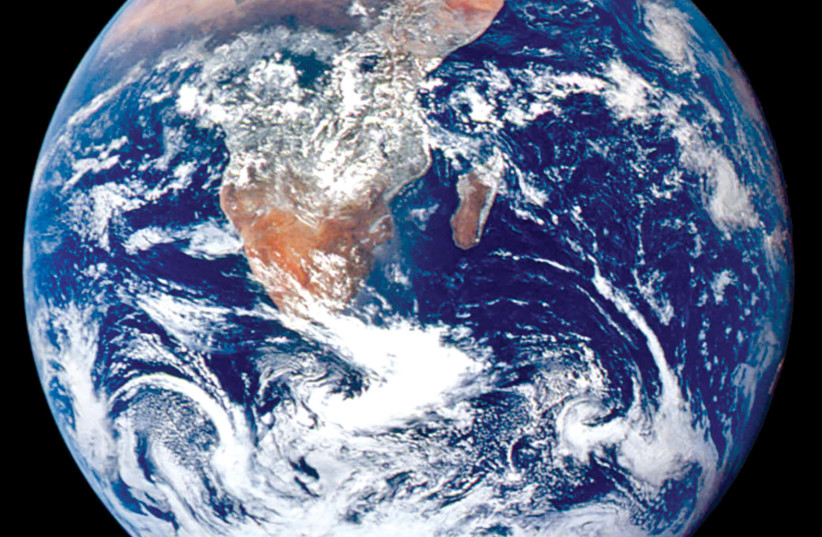Meteorites that are some 4.5 billion years old were some of the driest extraterrestrial objects ever recorded, ruling them out as the primary source of water on Earth and helping researchers understand the conditions that aligned to make Earth habitable, according to a new study published on Thursday.
Water covers 71% of Earth’s surface, but it is unknown when or how all this water arrived on Earth.
The study, which was published in the scientific journal Nature on Wednesday, helps scientists get closer to understanding these questions.
“We wanted to understand how our planet managed to get water because it’s not completely obvious. Getting water and having surface oceans on a planet that is small and relatively near the sun is a challenge.”
Megan Newcombe, Assistant Professor of Geology at the University of Maryland
The scientists, led by Megan Newcombe, an Assistant Professor of Geology at the University of Maryland, analyzed melted meteorites that had been floating in space since the formation of the solar system. The team found that the meteorites were extremely low in water content. In fact, they were among the driest extraterrestrial materials ever measured.
“We wanted to understand how our planet managed to get water because it’s not completely obvious,” said Newcombe. “Getting water and having surface oceans on a planet that is small and relatively near the sun is a challenge.”

The scientists analyzed seven melted, or achondrite, meteorites that broke off of at least five planetesimals - objects that collided to form planets - billions of years ago. Many of the planetesimals were heated up by the decay of radioactive elements that were present in the early solar system, causing them to separate into layers with a crust, mantle and core in a process called melting.
The experiment marked the first time anyone had ever measured the volatiles of these extremely old meteorites as they fell to Earth just recently.
Because these meteorites fell to Earth only recently, this experiment was the first time anyone had ever measured their volatiles. Liam Peterson, a geology graduate student at UMD who was part of the study, measured the levels of magnesium, silicon, iron and calcium in the samples using an electron microprobe before assisting Newcombe with measuring their water contents using a secondary ion mass spectrometry instrument at the Carnegie Institution for Science’s Earth and Planets Laboratory.
“The challenge of analyzing water in extremely dry materials is that any terrestrial water on the sample’s surface or inside the measuring instrument can easily be detected, tainting the results,” said Conel Alexander of the Carnegie Institution for Science, who co-authored the study.
In order to reduce contamination, the researchers put the samples in a low-temperature vacuum oven to remove any surface water and then dried them out a second time before analyzing them in the secondary ion mass spectrometer.
“I had to leave the samples under a turbo pump—a really high-quality vacuum—for more than a month to draw down the terrestrial water enough,” Newcombe noted.
How could water have reached Earth?
Some of the meteorite samples were from the inner solar system, which is widely believed to have been warm and dry.
Other samples originated in the colder outer solar system, where water is thought to have come to Earth from. It is not yet known what object could have transported the water across the solar system.
“Our meteorite collections preserve a subset of objects that were present in the early Solar System and were possible vehicles of volatile delivery to the proto-Earth,” the researchers said.
“We knew that plenty of outer solar system objects were differentiated, but it was sort of implicitly assumed that because they were from the outer solar system, they must also contain a lot of water,” said geologist Sune Nielsen of the Woods Hole Oceanographic Institution, who also co-authored the study. “Our paper shows this is definitely not the case. As soon as meteorites melt, there is no remaining water.”
The team found in their analysis that water accounted for less than two millionths of the mass of the meteorites. In comparison, carbonaceous chondrites, the wettest meteorites, contain up to about 20% of water by weight, 100,000 times more than the samples in the study.
“Our results demonstrate that differentiated planetesimals efficiently degassed before or during melting,” wrote the researchers. “This finding implies that substantial amounts of water could only have been delivered to Earth by means of unmelted material.”
The researchers found that, contrary to popular belief, not all outer solar system objects are rich in water leading them to the conclusion that water was probably transported to Earth on unmelted, or chondritic, meteorites.
“Water is considered to be an ingredient for life to be able to flourish, so as we’re looking out into the universe and finding all of these exoplanets, we’re starting to work out which of those planetary systems could be potential hosts for life,” Newcombe stated. “In order to be able to understand these other solar systems, we want to understand our own.”
